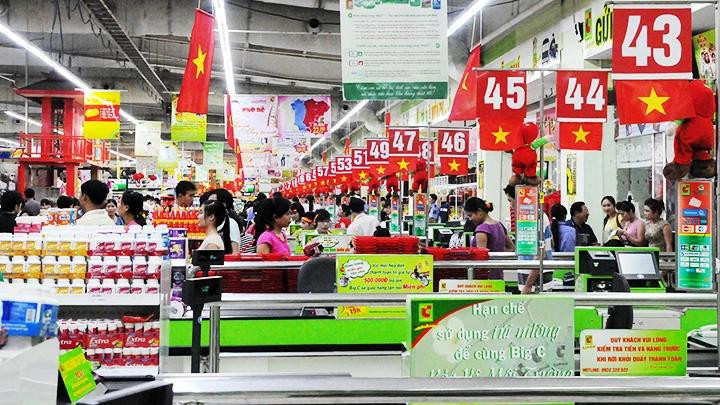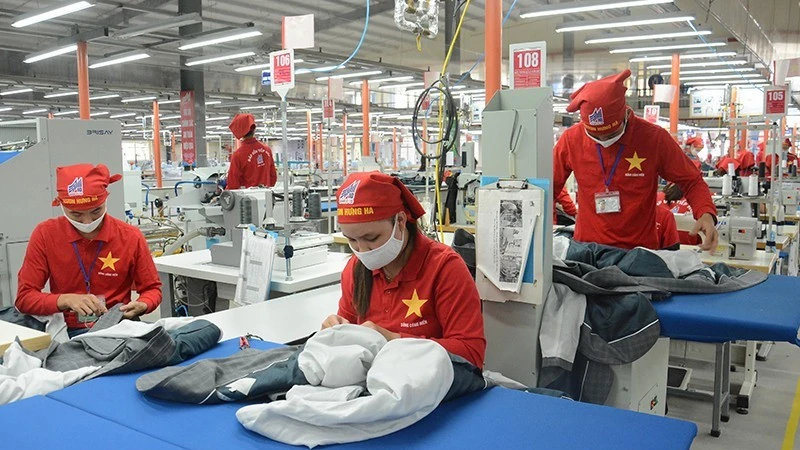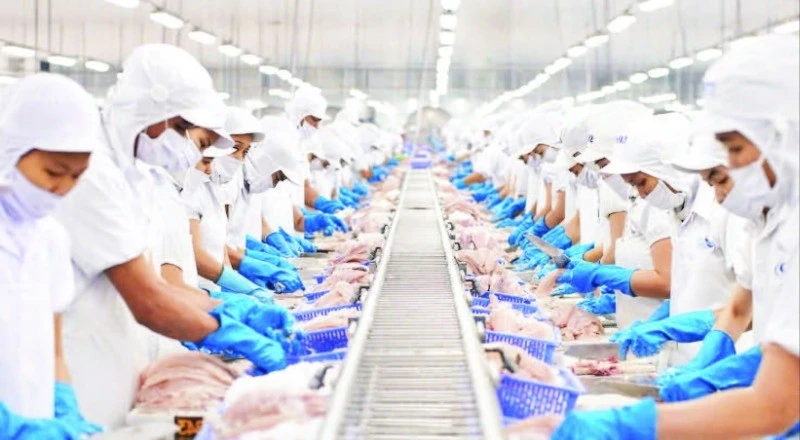The drive from multi-channel retail
According to the General Statistics Office, the first quarter of 2025 marked an impressive shift in Vietnam’s retail market, with total retail sales of goods and consumer service revenue reaching 1,708.3 trillion VND, up 9.9% compared to the same period in 2024. In March 2025 alone, retail sales hit VND 570.9 trillion, a 10.8% increase year-on-year, thanks to high shopping demand during Tet and the festive season.
The multi-channel retail strategy, combining online platforms (e-commerce, social media, livestreaming) and stores (supermarkets, convenience stores), has become a key driver of purchasing power. According to Sapo Technology JSC, 55.7% of 15,000 surveyed sellers recorded revenue growth by adopting a multi-channel model, with most earning between 200 million VND and 1 billion VND per month. Sellers with rising revenues are focusing their advertising budgets on social media platforms like Instagram, TikTok, and Facebook, as well as e-commerce sites like Shopee and Lazada, highlighting a strong shift towards digital platforms.
GO! supermarket chain is one of the most dynamic names in this transformation. Nguyen Minh Tuan, Director of GO! Thang Long supermarket stated that opening more stores is no longer the only way to increase revenue. Businesses must develop strong online sales strategies, engage effectively on social media, and leverage data to personalise the customer experience.
“GO!’s online channel now handles 700–750 orders per day, accounting for 11% of total revenue. Orders from 200,000 VND and above are delivered free within a 10km radius, along with attractive in-store promotions. As a result, the revenue in the first quarter of 2025 saw positive growth,” Tuan reported.
The Online-to-Offline (O2O) model has also been effectively implemented by major retailers like Aeon, Bach Hoa Xanh, Winmart, and others. With just a few taps on their phones, consumers can have goods delivered to their doors or ready for pick-up in-store. This model has boosted in-store foot traffic by 15–20%, especially in urban areas like Hanoi and Ho Chi Minh City. Most supermarket chains have now upgraded to offer this seamless shopping experience.
“In the past, I mainly shopped at the supermarket near home, but carrying all the goods back was inconvenient, especially when buying in bulk. Now I can just place an order via my phone at the office and have everything delivered to my doorstep in the evening—it’s extremely convenient,” said Nguyen Thi Tuyet Mai, an office worker in Hanoi.
According to Mobile World Investment Corporation’s (MWG) 2024 business summary report, the online channel of Bach Hoa Xanh completed over 3 million transactions and contributed over 925 billion VND in revenue.
Synchronising technology to retain consumers
Creating a seamless shopping journey from online to offline is now a survival strategy for many retailers. It’s no longer just about integrating technology, it’s about maximising customer convenience in every interaction. However, with increasing operating costs, especially following the adjustment of e-commerce platform fees from April 1, businesses face the challenge of optimising technology while maintaining financial efficiency.
According to Tin Le, CEO of Adtek, a distributor of infrastructure solutions for enterprises and data centres, platform fees now make up 10% of the cost structure for many sellers. Added marketing and logistics costs further erode real profit margins. Nevertheless, this is also a catalyst for more transparent operations and healthier competition in the market.
To care for and retain customers, many retailers are turning to data management platforms and artificial intelligence (AI). Le Thi Huong Tham, Director of Aeon Xuan Thuy General Merchandise and Supermarket Centre, said: “Synchronising online and offline pricing is a tough challenge. If not handled carefully, customers may lose trust when they notice price discrepancies. Aeon has applied AI to manage inventory and personalise promotions. AI analyses customer data to offer suitable deals, such as discount vouchers, based on shopping history. The key is to understand what consumers want, through every click, every order review, every peak shopping hour. Every small data point helps us understand our customers better.”
“Essential items like shampoo, shower gel, cotton buds, etc.—I never have to search again in the app. Once purchased, they’re remembered. It might cost a bit more at first than buying directly, but the convenience makes up for it. And if you shop often, there are plenty of offers—sometimes it even ends up cheaper than in-store without having to go anywhere,” shared Le Thu Thuy from Ba Dinh, Hanoi.
Beyond Aeon, many retail giants have deployed chatbots and service robots in supermarkets to enhance customer experience and reduce operational pressure. In an increasingly competitive retail market, businesses must not only expand distribution channels but also invest methodically in data management, digital branding, and e-commerce workforce training.
Looking ahead, multi-channel retail in Vietnam is expected to keep booming, driven by growing online shopping habits. Technologies like virtual reality (VR) for remote product experiences and contactless payments are expected to continue reshaping the retail industry.
This requires businesses to invest not only in technology but also in ensuring standards in data security, after-sales service, and information transparency—core competitive factors in the increasingly fierce retail landscape.
















